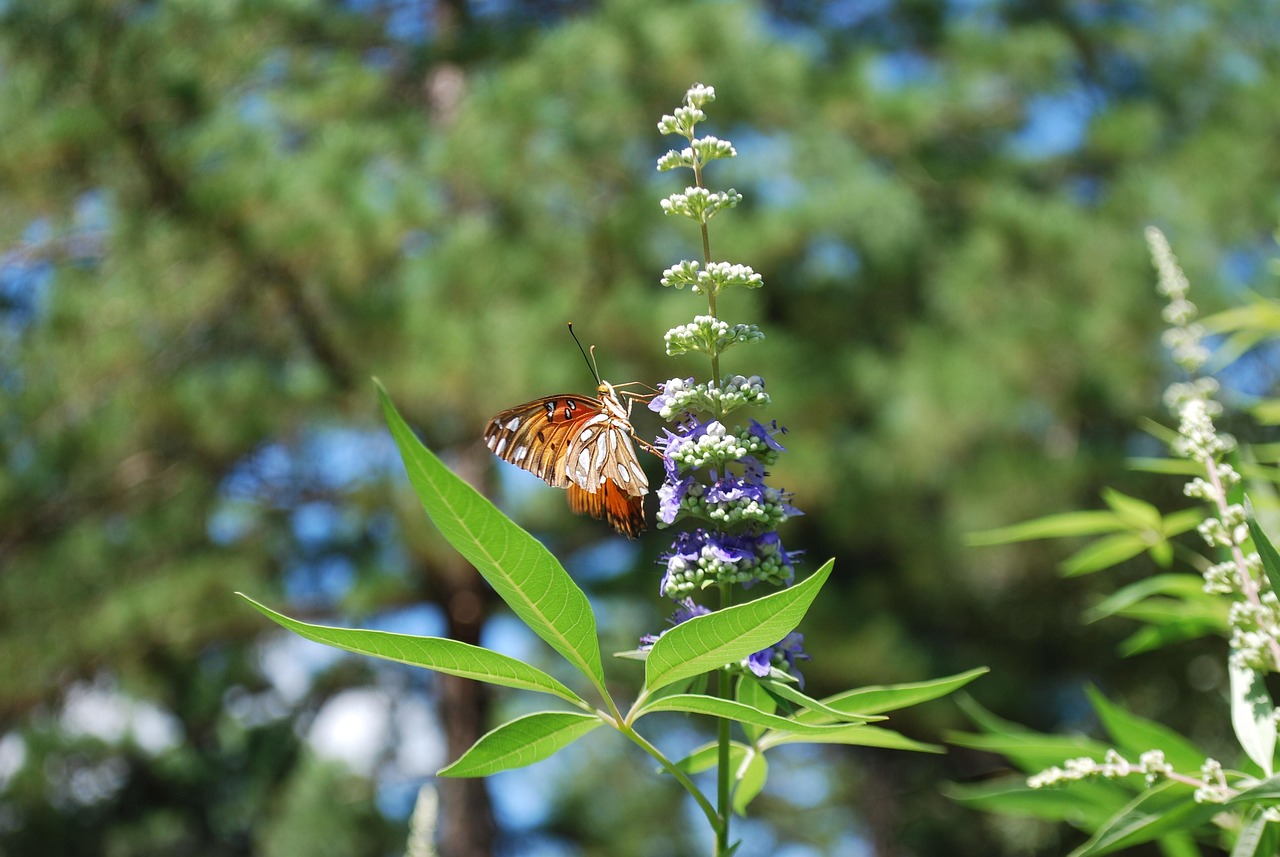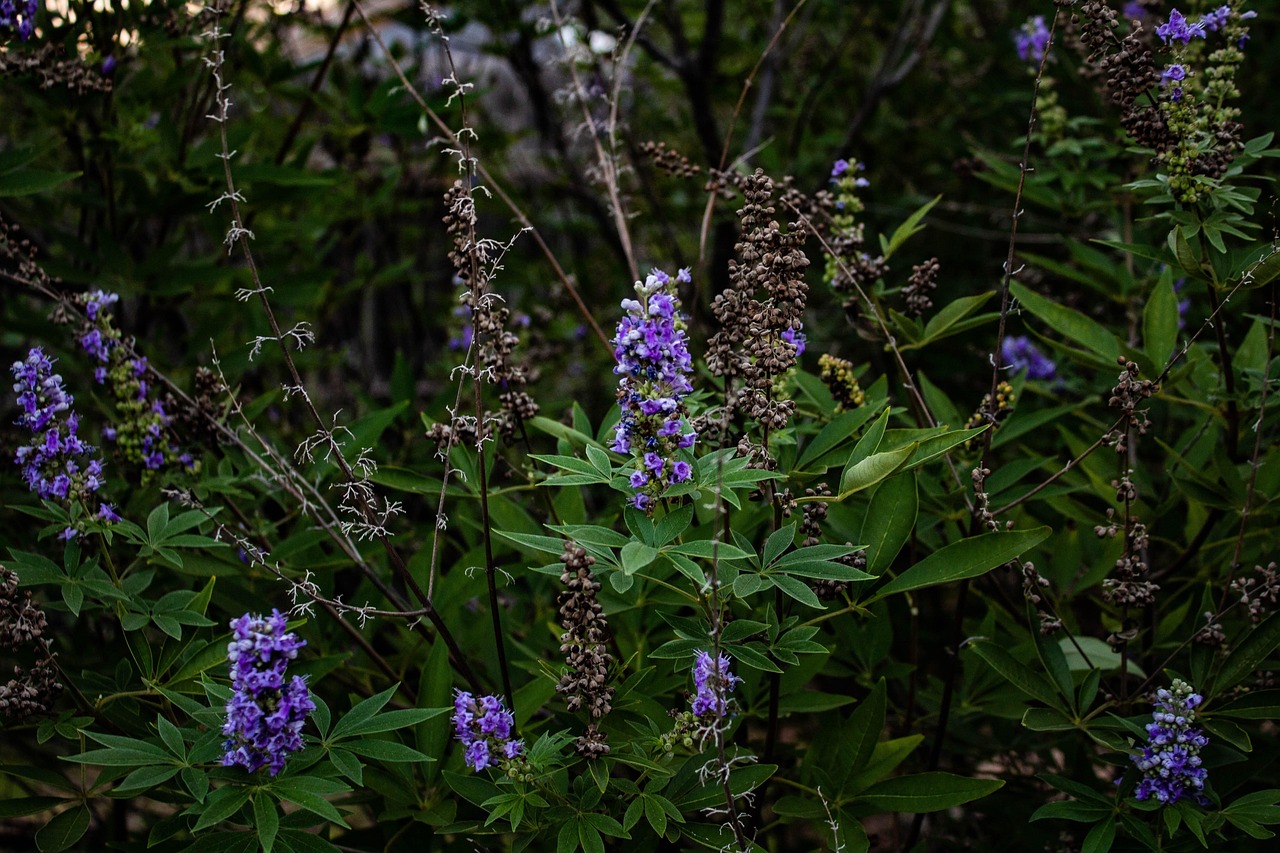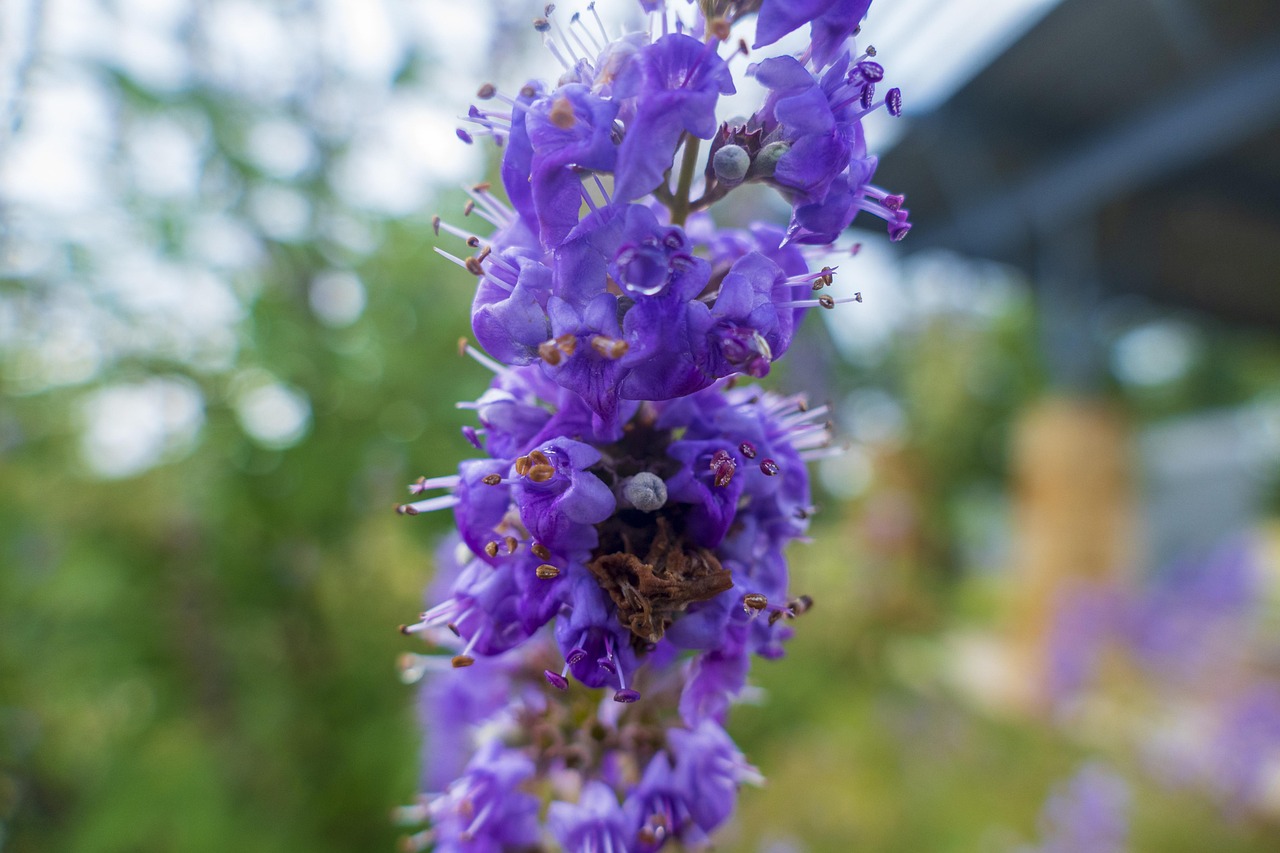The Vitex tree, also known as the chaste tree, exhibits a moderate to fast growth rate, typically reaching heights of 10 to 20 feet in optimal conditions. It is particularly noted for its resilience against heat and drought, thriving in well-drained soils and requiring minimal water once established.
Vitex agnus-castus, commonly called the Vitex tree or chaste tree, is a deciduous shrub native to the Mediterranean region. It has gained popularity in various climates due to its stunning purple flowers and aromatic foliage. One of the most appealing aspects of the Vitex tree is its remarkable ability to withstand harsh environmental conditions, making it a favored choice for gardens and landscapes in hot and dry regions.

This tree’s growth rate can vary depending on several factors, including soil quality, water availability, and climate. Typically, under ideal conditions, the Vitex tree can grow anywhere from 3 to 5 feet per year. It is essential to ensure proper care during its early growth stages to establish a strong root system.
Growth Rate Factors
Understanding the growth rate of the Vitex tree involves considering various factors that influence its development. These include:
- Soil Quality: Vitex prefers well-drained soils that are rich in organic matter. Poor-quality soil can hinder growth.
- Water Availability: While the tree is drought-tolerant once established, it requires adequate moisture during its initial growth phase.
- Sunlight: Vitex thrives in full sun. Insufficient sunlight can slow down its growth rate.
- Temperature: The tree is well-suited for warm climates but can struggle in prolonged periods of extreme cold.
The Vitex tree’s adaptability makes it an excellent candidate for xeriscaping and low-water-use gardens. Its ability to thrive with minimal irrigation helps conserve water resources, particularly in regions prone to drought.

Drought Tolerance
Drought tolerance is one of the standout features of the Vitex tree. Once established, it can endure long periods without water. This characteristic is particularly beneficial for gardeners in arid regions or those looking to reduce their water usage. The following points highlight the Vitex tree’s drought-tolerant traits:
- The deep root system allows the tree to access moisture from deeper soil layers.
- Its waxy leaves reduce water loss through transpiration.
- The plant’s overall structure supports water retention in its foliage and stems.
These adaptations make the Vitex tree not only a beautiful addition to any landscape but also a practical choice for sustainable gardening practices. The combination of its aesthetic appeal and functional benefits contributes to its growing popularity among gardeners and landscapers alike.
Heat Tolerance
In addition to drought resistance, the Vitex tree is also highly tolerant of heat. This makes it an ideal selection for warmer climates where temperatures often soar. Some advantages of its heat tolerance include:

- Resilience: The Vitex tree maintains healthy growth even in high temperatures.
- Flowering Period: It produces vibrant blooms throughout the summer, a time when many plants may struggle.
- Low Maintenance: Its heat tolerance reduces the need for frequent watering or special care during hot spells.
This combination of heat and drought tolerance allows gardeners to enjoy vibrant landscapes without compromising on environmental sustainability. As climate change continues to impact weather patterns, selecting plants like the Vitex tree can help ensure a thriving garden even under challenging conditions.
Overall, the growth rate of the Vitex tree is a critical aspect of its appeal. Understanding how environmental factors affect its growth can help gardeners maximize their potential while contributing positively to their local ecosystems.
Care and Maintenance of the Vitex Tree
Caring for a Vitex tree involves understanding its specific needs to promote healthy growth and flowering. While the Vitex is relatively low-maintenance, certain practices can enhance its development and overall appearance. Proper care will ensure that the tree reaches its full potential in terms of size, shape, and flowering capacity.
Watering Practices
In the initial stages of growth, the Vitex tree requires regular watering to establish its roots. Once established, the tree is quite drought-tolerant. However, there are guidelines to follow during both phases:

- Initial Growth Phase: Water the tree deeply once a week during the first year, especially during dry spells.
- Established Trees: After the first year, reduce watering frequency. The Vitex can thrive on rainfall alone in most climates.
- Signs of Stress: If leaves begin to wilt or drop prematurely, consider providing supplemental water.
Fertilization
Fertilization is an important aspect of maintaining healthy Vitex trees. The right nutrients can support robust growth and vibrant blooms. Here are some key points regarding fertilization:
- Timing: Apply fertilizer in early spring as new growth begins.
- Type of Fertilizer: A balanced slow-release fertilizer or organic compost can provide essential nutrients.
- Avoid Over-Fertilization: Excessive fertilizer can lead to lush foliage but poor flowering.
Pruning for Shape and Health
Pruning is beneficial for shaping the Vitex tree and encouraging better air circulation. This practice helps reduce disease and promotes more abundant flowering. Consider the following:
- Timing: Prune in late winter or early spring before new growth starts.
- Technique: Remove dead or damaged branches. Thin out crowded areas to improve airflow.
- Shaping: Aim for an open center to allow light penetration and promote even growth.
Pests and Diseases
The Vitex tree is generally resistant to many pests and diseases, but it is not entirely immune. Being aware of potential issues can help in managing them effectively.
Common Pests
While the Vitex tree has few serious pest problems, some insects may occasionally pose a threat:
- Aphids: These small insects can cluster on new growth. They may be controlled with insecticidal soap or neem oil.
- Spider Mites: These can cause leaf discoloration. Increasing humidity around the plant can help deter them.
- Scale Insects: They appear as small bumps on stems and leaves. Treatment with horticultural oil can be effective.
Diseases
The Vitex tree is relatively disease-resistant, but it can be affected by some conditions:
- Root Rot: This can occur in poorly-drained soils. Ensure proper drainage to prevent this issue.
- Leaf Spot: Fungal infections may cause unsightly spots on leaves. Regular pruning and good airflow help prevent this.
Propagation Methods
For those interested in expanding their Vitex collection, propagation is possible through several methods. Each method has its advantages, depending on the gardener’s preference and resources available.
Seed Propagation
Growing Vitex from seeds is a straightforward process but requires patience:
- Seed Collection: Collect seeds from ripe capsules in late summer to early fall.
- Stratification: Soak seeds in water for 24 hours, then store them in a moist medium in the refrigerator for 30 days.
- Sowing: After stratification, sow seeds in well-draining soil indoors, then transplant seedlings outdoors once they are established.
Cutting Propagation
Taking cuttings is another effective method for propagating Vitex trees. This method can yield quicker results compared to seed propagation:
- Selecting Cuttings: Choose semi-hardwood cuttings during late spring or early summer.
- Treatment: Dip cut ends in rooting hormone to encourage root development.
- Planting: Place cuttings in moist potting mix and keep them in a warm location until roots develop.
The ability to propagate Vitex trees through seeds or cuttings allows gardeners to share their plants with others, enhancing both gardens and community landscapes alike.
Landscape Uses of the Vitex Tree
The Vitex tree is not only valued for its heat and drought tolerance but also for its versatility in landscaping. It can be utilized in various ways to enhance the aesthetic appeal of gardens and public spaces. Understanding these uses can help gardeners and landscapers make informed decisions about incorporating this beautiful tree into their designs.
Ornamental Features
One of the primary reasons for planting the Vitex tree is its ornamental characteristics. The tree boasts several features that make it visually appealing:
- Flowers: The Vitex tree produces clusters of small, fragrant purple flowers that bloom in summer, attracting pollinators like bees and butterflies.
- Foliage: Its palmate leaves provide an attractive backdrop throughout the growing season. The leaves have a pleasant fragrance when crushed.
- Structure: The tree has a bushy, rounded form that adds height and structure to landscapes.
Garden Design Applications
The Vitex tree can serve multiple roles in garden design. Here are some applications where it shines:
- Specimen Plant: As a standalone feature, the Vitex can draw attention due to its size and beautiful blooms.
- Border Planting: It can be used effectively in borders or as a hedge, providing privacy and screening while still allowing light through.
- Pollinator Gardens: The flowers attract beneficial insects, making it an excellent choice for gardens aimed at supporting local wildlife.
Wildlife Benefits
The Vitex tree plays an important role in supporting local wildlife. Its flowers and structure provide habitat and food sources for various species.
Attracting Pollinators
The fragrant flowers of the Vitex tree are particularly attractive to pollinators. Here are some key points regarding its impact on local ecosystems:
- Bees: Many species of bees are drawn to the nectar-rich blooms, aiding in pollination efforts across surrounding plants.
- Butterflies: The vibrant flowers serve as a landing pad for butterflies, providing them with sustenance during their life cycles.
- Birds: The tree’s structure offers nesting sites and shelter for various bird species, contributing to biodiversity.
Providing Habitat
Beyond attracting pollinators, the Vitex tree offers habitat benefits:
- Nesting Sites: The dense foliage provides shelter for birds and small mammals.
- Food Source: While the fruit is not typically consumed by humans, it can provide nourishment for some wildlife.
Cultural Significance and Uses
The Vitex tree has been used culturally in various regions due to its unique properties. Understanding these cultural aspects can enrich one’s appreciation of this plant.
Historical Uses
The Vitex tree has a rich history, particularly in ancient cultures:
- Medicinal Uses: Traditionally, parts of the Vitex tree have been used in herbal medicine for various ailments, including hormonal balance.
- Cultural Symbolism: In some cultures, the tree has been associated with spirituality and fertility, often planted near sacred sites.
Modern Applications
In contemporary society, the Vitex tree continues to hold significance:
- Aesthetic Appeal: Its beauty makes it a popular choice for urban landscaping and public gardens.
- Sustainable Landscaping: As more people seek eco-friendly gardening options, the Vitex tree’s drought tolerance positions it as an ideal choice for sustainable designs.
Pest Management Strategies
<pWhile the Vitex tree is generally pest-resistant, implementing effective management strategies can further protect its health. Here are some approaches to consider:
Monitoring and Identification
Regularly inspecting the tree for signs of pests or disease is crucial. Key steps include:
- Visual Inspections: Look for unusual spots on leaves or signs of insect activity.
- Identifying Pests: Familiarize yourself with common pests that affect vitex trees and their symptoms.
Natural Control Methods
If pests are detected, consider using natural control methods before resorting to chemicals:
- Beneficial Insects: Encourage predatory insects like ladybugs, which feed on aphids and other harmful pests.
- Natural Sprays: Use insecticidal soap or neem oil to manage pest populations without harming beneficial insects.
The combination of careful monitoring and natural pest management ensures that the Vitex tree remains healthy while minimizing environmental impact. By embracing these practices, gardeners can enjoy the numerous benefits that come with cultivating this resilient tree.
Additional Benefits of the Vitex Tree
Beyond its growth rate, heat tolerance, and drought resistance, the Vitex tree offers numerous additional benefits that can enhance any landscape. Understanding these advantages can help gardeners and landscapers appreciate the full value of this remarkable tree.
Environmental Impact
The Vitex tree contributes positively to the environment in several ways:
- Carbon Sequestration: Like all trees, the Vitex absorbs carbon dioxide from the atmosphere, helping to mitigate climate change.
- Soil Improvement: The tree’s root system can improve soil structure and prevent erosion, particularly on slopes.
- Microclimate Creation: Planting Vitex trees can create a cooler microclimate, benefiting other plants in the vicinity.
Low Maintenance Requirements
One of the standout features of the Vitex tree is its low maintenance needs. This characteristic makes it an ideal choice for busy gardeners or those looking for a resilient plant. Here are some aspects of its low maintenance:
- Minimal Watering: Once established, the Vitex requires little additional watering, especially in climates that receive adequate rainfall.
- Pest Resistance: Its natural resistance to many pests reduces the need for chemical treatments, promoting a healthier ecosystem.
- Self-Pruning: The tree naturally sheds dead or weak branches, minimizing the need for frequent pruning.
Aesthetic Versatility
The Vitex tree’s aesthetic qualities allow it to be incorporated into various design styles. Its versatility means it can be used in a variety of settings:
- Formal Gardens: Its neat shape and vibrant blooms make it suitable for formal landscaping.
- Cottage Gardens: The Vitex blends beautifully with more relaxed, informal garden designs.
- Xeriscaping: Its drought tolerance makes it a perfect fit for water-efficient gardens.
Final Thoughts
The Vitex tree stands out as an excellent choice for gardeners seeking a resilient and beautiful addition to their landscapes. Its moderate to fast growth rate, coupled with exceptional heat and drought tolerance, makes it a practical option for various climates. Beyond its adaptability, the numerous environmental and aesthetic benefits it provides enhance its appeal.
As climate change continues to challenge traditional gardening practices, incorporating trees like the Vitex can play a vital role in creating sustainable landscapes. Their ability to thrive in tough conditions while supporting local wildlife makes them a valuable asset in any garden.
In summary, the Vitex tree not only beautifies outdoor spaces but also supports ecological health. Whether you are an experienced gardener or just starting, understanding and utilizing the strengths of this remarkable tree can lead to a thriving garden that flourishes even in the face of adversity. Embracing plants like the Vitex tree is a step toward a more sustainable and resilient future in gardening.
